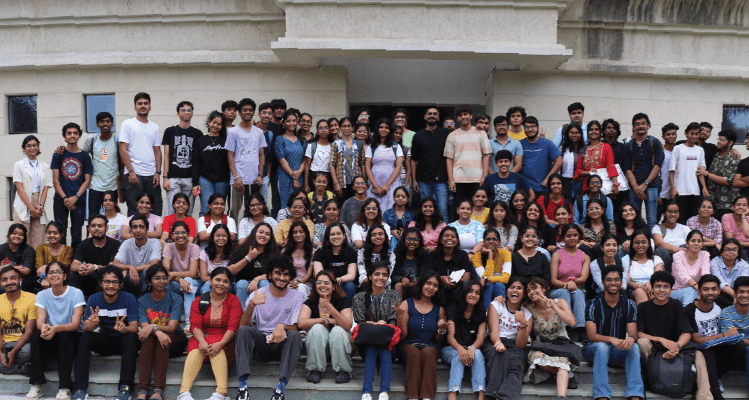Today Post-Its are globally one of the top five most popular office supply products. But do you hear the story of how the sticky notes called 'Post-It' were invented?
It took 3M almost 12 years to commercialize it after a 3M scientist Spencer Silver failed to create a super strong adhesive to be used for aero industry in building planes and instead he developed an incredibly weak, pressure sensitive adhesive called Acrylate Copolymer Microspheres. But it was 3M Product Manager who discovered fascinating use of the this 'grand failure' after multiple trials and validation with possible users. And the rest is history.
This short story brings us to the point when we think over 'The Power of the Unexpected' in an organization. The organization can realize this power and actually benefit it from it by making 'Design Thinking' its DNA.
So how 'Design Thinking' is practiced in context of innovative by organizations across their various functions. It will be a good idea to define basic elements of Design Thinking as refresher. It is a rigorous approach to connect:
- What you know (by your experience and information you gather from various sources, collaborating with experts and other non-experts)
- What we can do (by our skills to adapt, communicate, express, experiment, prototype, test)
- What you see & perceive (by observing people activity, empathizing with them, making sense of what is right and what is not)
- What you imagine (in terms of ideas, what if...scenarios)
Next is, how to unleash Design Thinking in organization - any organization?
Be it Manufacturing, IT Services, Hospitality, FMCG, White-Brown-Yellow Goods, Communication Services, Educational & Training or be it Strategic planning, Marketing, Sales, HR, Operations, Supply Chain Management, Logistics, Procurement, Production.
How to unleash Design Thinking in functional area - any function?
Everyone asks what skills are needed to grow our organization in next 20 years. We are asking the wrong question. Skills become outdated the moment you learn them, knowledge gets surpassed instantly. If we want to future-proof ourselves, we need to become an idea person, adaptable, open-minded, adept at any-problem-solving, persuasive communicator, inventor, artist, story teller, entertainer.
Here are some common elements to unleash Design Thinking in diverse organizations and in diverse functions:
- Alignment
- Are you confident that any employee in your organization will recognize and respond positively to a potentially useful idea?
- Does your KRAs (Key Result Areas) include new idea generation?
- Do some policies and rules in organization cause misalignments that interfere with innovation?
- Self-Initiated Activity
- Within the last month, did you propose or initiate a creative action outside your Key Performance Areas?
- Think back in time, you suggested a bad idea to your manager in good faith. How did he/she respond? Was it simply rejected and ridiculed? Or he/she saw it as a learning opportunity?
- Serendipity
- If any fortunate accident occurred in the organization which played a role in a creative action as after-effect?
- Is every employee in your organization is rotated into all kinds of functions he/she is qualified for?
- Is there redundant human potential in your organization? Think how this unused potential might play a role in a creative act?
- Diverse Stimuli
- What does your organization do to bring in employees who do not normally meet customers, suppliers, into contact with them?
- Does your organization plan a study leave or sabbaticals for employees where they can follow their passions?
- Within-Organization Communication
- Are you a member of an informal group of employees who have a common interest in a new kind of activity - say Reiki or PechaKucha.
- Are you confident that everyone is your organization is either aware of your special expertise or could easily find out about it?
- How often do others from your organization contact you for information? How do you respond to their requests?
The degree to which the interests and actions of every employee support organization's innovation goals, determine its performance. An organization can not sustain its innovations unless it is strongly aligned to enable it.
It is critical that all the decision makers need to recognize value of alignment and commit themselves to it.
To know if your organization is aligned enough for innovation, ask :
It is basic human instinct to be innovative. Research across innovative organizations shows that most unexpected creative actions come from self-initiated activities.
Key is to recognize this and to unleash an effective system which responds to employee ideas irrespective of hierarchies.
To know if your organization supports self-initiated activities, ask :
Serendipity is fortunate accident that brings forth a great insight. A bias for action, a 'Just Do it' attitude that encourages tinkering and experimentation will lead to potentially more fortunate accidents. Every accident is an exception to what was expected.
To know if your organization promotes serendipity, ask :
A stimulus provides a fresh insight into something you are already set out to do or bumps you into something totally unanticipated. Diverse stimuli come out of diverse experiences and exposures.
To know if your organization is hardwired to provide for diverse experiences, ask :
One of the things happen in small organization naturally and does not happen easily in larger ones is within-organization communication.
Do people and information are brought together in unanticipated ways? Do you have planned programs where you meet people in your organization you normally will not?
To know if your organization has a strong within-organization communication, ask :
My extensive journey into various industries and my fruitful interaction across various functions in the organization led me to 'Discover' the power of the Unexpected. Your new journey will lead you to realize it.
